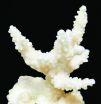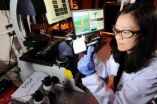(Press-News.org) A trawl of the genome of the deadly bacterium Bacillus anthracis has revealed a clutch of targets for new drugs to combat an epidemic of anthrax or a biological weapons attack. The targets are all proteins that are found in the bacteria but not in humans and are involved in diverse bacterial processes such as metabolism, cell wall synthesis and bacterial persistence. The discovery of a range of targets might bode well for creating a drug cocktail that could preclude the emergence of drug resistance.
Ravi Gutlapalli of the Department of Biotechnology, at Acharya Nagarjuna University in Guntur, Andhra Pradesh, India, and colleagues there and at Osmanaia University College for Women in Hyderabad, suggest that the search for drugs to fight Bacillus anthracis is of increasing importance as we face an ongoing threat of its use as a biological weapon. The team has now carried out a search of the bacterial genome and identified 270 non-redundant, non-human homologous genes and 103 essential genes of the bacteria as possible drug targets.
The team explains that they have fished out sixteen membrane-bound proteins, seven proteases and three adhesion molecules that are all novel from their trawl any one of which might now be used in the rational design of new drugs with previously unused modes of action. This latter point is most important in reducing the chances of the bacteria quickly evolving resistance.
Early diagnosis and treatment with potent antibiotics is essential in any of the three clinical forms of anthrax: cutaneous, gastrointestinal and pulmonary. Unfortunately, the bacteria have evolved resistance to common antibiotics including ciprofloxacin, doxycycline and beta-lactam type drugs. The team now hopes that its identification of a range of novel targets for antibiotics will allow medicinal chemists to quickly screen for activity among diverse molecules as putative antibiotics.
With several possible targets in hand, researchers now need to create homology models of each against which potential drugs might be screened on the computer and thence synthesize in the laboratory and tested against the bacteria under secure conditions.
###"Genome wide search for identification of potential drug targets in Bacillus anthracis" in Int. J. Computational Biology and Drug Design, 2012, 5, 164-179
Anthrax targets
2012-08-20
ELSE PRESS RELEASES FROM THIS DATE:
Ecologist: Genetically engineered algae for biofuel pose potential risks that should be studied
2012-08-20
COLUMBUS, Ohio - Algae are high on the genetic engineering agenda as a potential source for biofuel, and they should be subjected to independent studies of any environmental risks that could be linked to cultivating algae for this purpose, two prominent researchers say.
Writing in the August 2012 issue of the journal BioScience, the researchers argue that ecology experts should be among scientists given independent authority and adequate funding to explore any potential unintended consequences of this technological pursuit.
A critical baseline concern is whether genetically ...
Drink made from berry wine may provide tasty drug for diabetes
2012-08-20
URBANA – In evaluating the bioactive compounds of Illinois blueberry and blackberry wines, University of Illinois scientists have found compounds that inhibit enzymes responsible for carbohydrate absorption and assimilation. And that could mean a tasty way to help people with diabetes decrease their blood sugar.
"We're thinking about a dealcoholized fermented fruit beverage that would optimize the inhibition of the alpha-amylase and alpha-glucosidase enzymes and also make use of the wines' other healthful bioactive components," said Elvira de Mejia, a U of I professor ...
Why do the Caribbean Islands arc?
2012-08-20
The Caribbean islands have been pushed east over the last 50 million years, driven by the movement of the Earth's viscous mantle against the more rooted South American continent, reveals new research by geophysicists from USC.
The results, published today in Nature Geoscience, give us a better understanding of how continents resist the constant movement of the Earth's plates – and what effect the continental plates have on reshaping the surface of the Earth.
"Studying the deep earth interior provides insights into how the Earth has evolved into its present form," said ...
Experiment would test cloud geoengineering as way to slow warming
2012-08-20
Even though it sounds like science fiction, researchers are taking a second look at a controversial idea that uses futuristic ships to shoot salt water high into the sky over the oceans, creating clouds that reflect sunlight and thus counter global warming.
University of Washington atmospheric physicist Rob Wood describes a possible way to run an experiment to test the concept on a small scale in a comprehensive paper published this month in the journal Philosophical Transactions of the Royal Society.
The point of the paper -- which includes updates on the latest study ...
Psychologists link emotion to vividness of perception and creation of vivid memories
2012-08-20
TORONTO, ON – Have you ever wondered why you can remember things from long ago as if they happened yesterday, yet sometimes can't recall what you ate for dinner last night? According to a new study led by psychologists at the University of Toronto, it's because how much something means to you actually influences how you see it as well as how vividly you can recall it later.
"We've discovered that we see things that are emotionally arousing with greater clarity than those that are more mundane," says Rebecca Todd, a postdoctoral fellow in U of T's Department of Psychology ...
'DNA wires' could help physicians diagnose disease
2012-08-20
PHILADELPHIA, Aug. 19, 2012 — In a discovery that defies the popular meaning of the word "wire," scientists have found that Mother Nature uses DNA as a wire to detect the constantly occurring genetic damage and mistakes that ― if left unrepaired ― can result in diseases like cancer and underpin the physical and mental decline of aging.
That topic ― DNA wires and their potential use in identifying people at risk for certain diseases ― is the focus of a plenary talk here today during the 244th National Meeting & Exposition of the American Chemical ...
Meddling with male malaria mosquito 'mating plug' to control an epidemic
2012-08-20
PHILADELPHIA, Aug. 19, 2012 — Using information about the unique mating practices of the male malaria mosquito ― which, unlike any other insect, inserts a plug to seal its sperm inside the female ― scientists are zeroing in on a birth-control drug for Anopheles mosquitoes, deadly carriers of the disease that threatens 3 billion people, has infected more than 215 million and kills 655,000 annually.
They reported today at the 244th National Meeting & Exposition of the American Chemical Society on development of an approach for screening substances that could ...
Inspired by genetics, chemistry finally takes hold of its own code
2012-08-20
Stefan Matile opts for sincerity. For him, if organic chemistry is often fond of simplifying its functional systems, it is because it is mostly impossible for it to construct and manage molecular architectures as complex as those produced with tremendous efficiency in nature. "It's a fact", says the UNIGE professor and NCCR Chemical Biology member, "that we are far from being able to match the genius of nature."
Where the complexity arises
The specialist attributes the genetic code to this genius of nature. "It is rather simple because it is based on four foundations—adenine, ...
Improving water quality can help save coral reefs
2012-08-20
Research from the University of Southampton and the National Oceanography Centre, Southampton has found that an imbalance of nutrients in reef waters can increase the bleaching susceptibility of reef corals.
Corals are made up of many polyps that jointly form a layer of living tissue covering the calcareous skeletons. They depend on single-celled algae called zooxanthellae, which live within the coral polyps.
The coral animal and the associated zooxanthellae depend on each other for survival in a symbiotic relationship, where the coral supplies the algae with nutrients ...
Artificial intelligence helps detect subtle differences in mutant worms
2012-08-20
Research into the genetic factors behind certain disease mechanisms, illness progression and response to new drugs is frequently carried out using tiny multi-cellular animals such as nematodes, fruit flies or zebra fish.
Often, progress relies on the microscopic visual examination of many individual animals to detect mutants worthy of further study.
Now, scientists have demonstrated an automated system that uses artificial intelligence and cutting-edge image processing to rapidly examine large numbers of individual Caenorhabditis elegans, a species of nematode widely ...


